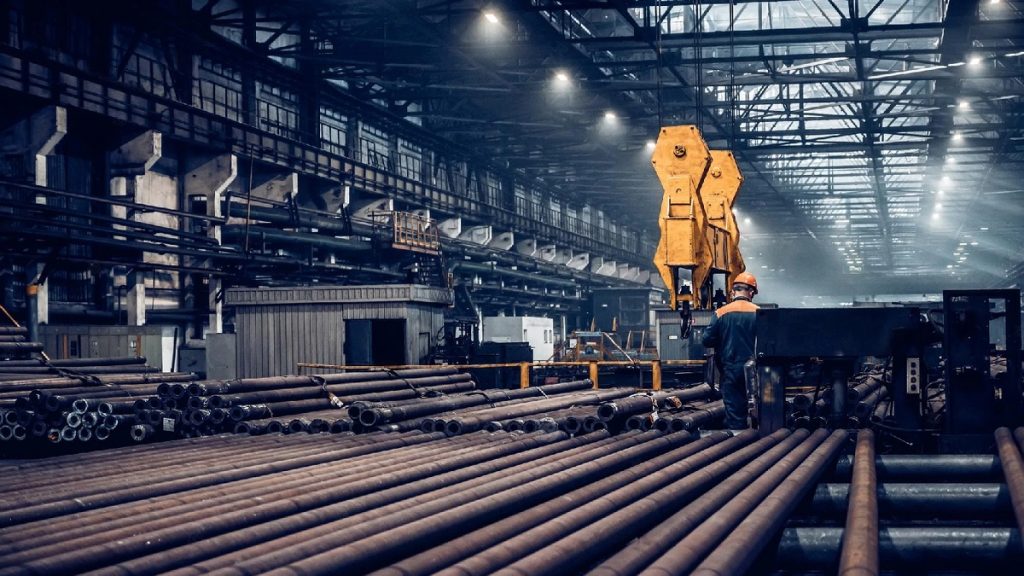Among the four Asian tigers, South Korea’s development strategies during their export-driven industrialization period (1962-80) stand out as a model case in which significant industrialization has been achieved through well-planned economic strategies and industrial policies.
The steel industry has played a significant role in Korea’s economic growth by providing raw materials to inter-industries such as automobiles, shipbuilding, and construction. Currently, the steel industry makes up 1.5% of the entire industry and 4.9% of the manufacturing industry of Korea. The country is increasing self-sufficiency and improving the trade balance by raising exports.
South Korea represented a backward, isolated economy based on agriculture well into the 1960s. With all the difficulties facing a typical developing country, Korea had to come a long way to achieve its current state. How did South Korea go from being one of the world’s poorest nations amid a war to a rapidly rising nation aiming for higher standards today with world-class technological development and production?
Initially, South Korea started with the textiles and footwear industries, and then slowly, its manufacturing moved towards heavy and chemical industries. Initiatives such as the steel and ship industries began in the 1970s, while electronics and automobiles took off in the 1980s. During the Park Chung Hee regime (1961-1979), the industrialization process of South Korea took a bright turn. Authoritarian Park directed the economy toward heavy and chemical industries (HCI).
The Korean army government established Pohang Iron and Steel Company (POSCO) in 1968. POSCO received sufficient government support to be recognized as a renowned steel company. It continued to expand its production capacity and set itself up to be successful by the mid-1980s.
The steel industry’s success resulted in an expansion of Korean steel production from 2.55 million tons in 1975 to 36.8 million tons in 1995, 43.1 million tons in 2000, and 48.5 million tons in 2006, making it the world’s fifth largest steel producer. POSCO’s domestic steel supply increased from 20 percent of consumption in the 1970s to more than 90 percent in 2000. It was such that the entire Korean economy could attain steady growth through the steel industry.
Korea started to welcome advanced foreign technologies and foreign investment in 1970. With the help of Japanese technology and supervision, an iron and steel mill was set up. Many foreign experts believed South Korea needed to prepare more to support a heavy industrial base like steel. Despite all the negativity, South Korea’s plan was successful.
Even during the economically challenging period globally in 1970, the Korean economy grew by twice as much. Production of carbon steel began at the same time. The steel industry accelerated in the 1980s when an excess demand for steel was created. From 1972 to 1982, steel production increased fourteen times. Korea reached maturity in steel production in 1990. Excessive material facilities caused oversupply. So, Korea finally had the opportunity to focus on developing innovative technologies.
There are several reasons behind the rapid growth of the Korean steel industry compared with other southeast Asian countries. The Korean steel industry had a comparative advantage in steel production because it had an efficient production system and skilled, low-cost laborers. The increasing demand for steel in the domestic market played a significant role in keeping the Korean steel industry steady.
Japanese steel producers Nippon Steel and Mitsubishi Heavy Industries suffered global overproduction, and with an unsuitable political climate, they decided to transfer heavily polluting industries out of Japan. At that moment, South Korea was an attractive alternative for them to set up a business.
Changes in the global economy created essential opportunities for the Korean steel industry. POSCO became one of the world’s largest steel firms and a critical component of the global economy. The policies followed by POSCO were very effective, and they helped it achieve and maintain its position in international competition. The opportunities created under the shelter of Japan helped POSCO and the Korean state promote economic growth worldwide.
The Korean steel industry gained an advantage in raw materials, technologies, and the production of other heavy items because of its high participation rate in the global economy. The steelmakers of Korea had to diversify their raw material sources and make international joint investments to get to where they are now. Steel shaped South Korea’s rise from a light industry base to a heavy and chemical-based industry.
The Korean government played an essential role in making the Korean economic miracle happen. Korea’s place among the four Asian tigers was possible because of the development of the steel industry. Korea is now a world leader in electronics, automobiles, shipbuilding, and other advanced industries.
